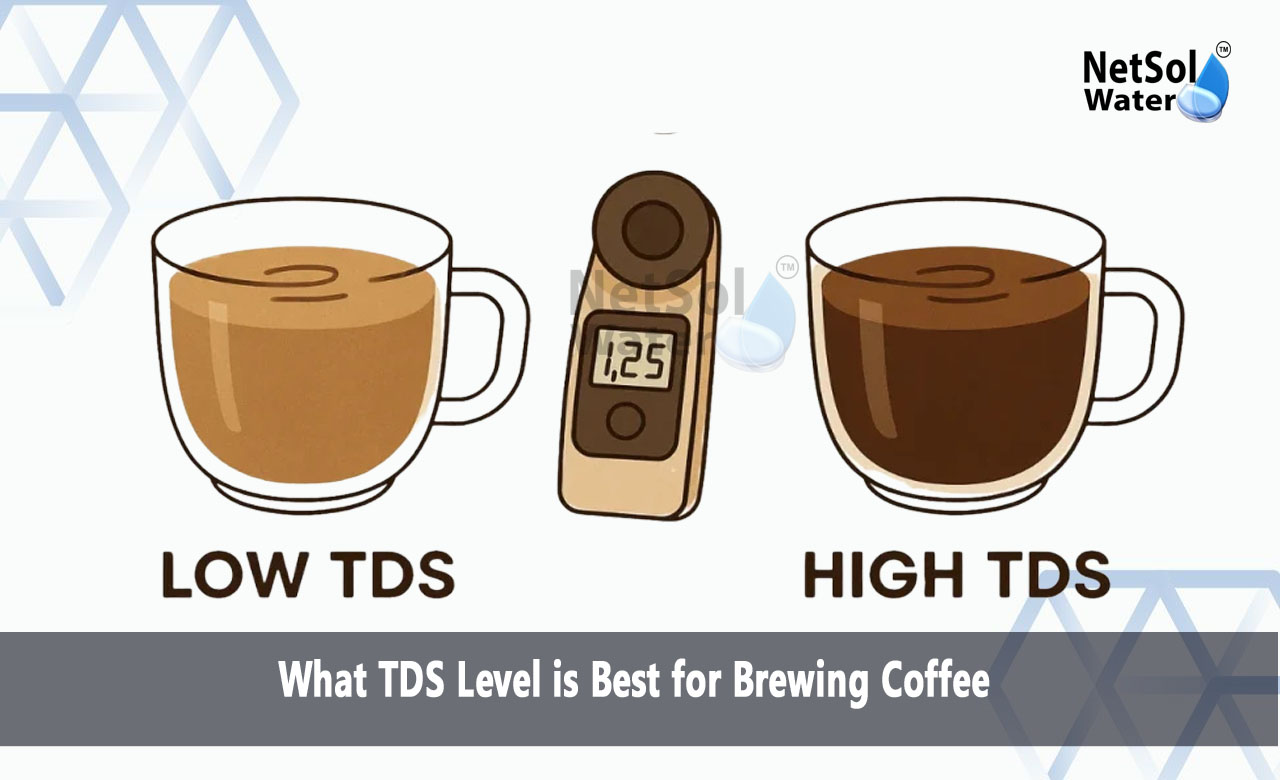What TDS Level is Best for Brewing Coffee?
Total dissolved solids or TDS describe the amount of dissolved matter in water and that amount changes the way coffee extracts. This question matters for anyone who loves a clean cup, a balanced cup or a strong cup. Here we explore how water strength shapes aroma, body and clarity. Good water makes flavours stand out and poor water can hide them or make the cup flat. Many baristas and coffee lovers test TDS to tune recipes and to keep results steady across batches.
TDS and its role in coffee
TDS matters for flavour and extraction and then lets us look at the main ideas. Let us have a look on some key elements and their effects.
What TDS means in practical terms?
TDS measures the dissolved minerals and solids in water. Higher TDS means more dissolved matter and lower TDS means purer water. Water with some dissolved minerals helps extract oils and acids from coffee grounds. Water with almost no dissolved solids will pull less flavour and can make coffee taste thin.
How TDS affects flavour and body?
TDS changes how we perceive acidity, bitterness and sweetness. Water with moderate TDS brings balance and body. Water with high TDS can mute delicate aromas and make the cup dull. Water with very low TDS can make the cup bright but thin. TDS also interacts with coffee grind size and brew time and so you must treat it as one part of a wider recipe.
How TDS links to extraction?
Higher dissolved solids speed up extraction of some compounds and slower extraction of others. This affects strength and taste. When you control TDS you reduce the variables you must manage to hit a target flavor profile. Stable TDS supports repeatable brewing and helps you refine other variables like dose and time.
Ideal TDS ranges for different brew methods
Let us have a look on some examples and how to use them.
Espresso and concentrated methods
Espresso benefits from stronger water that supports a dense body. A TDS range near three hundred to one thousand parts per million can work for machines that use short shots and high pressure. Adjusting for grinder and dose remains critical. If water TDS sits too low the espresso lacks body. If it sits too high the shot may taste flat.
Pour over and drip coffee
Pour over methods show clarity and nuance when water TDS stays in a middle band. A TDS range near one hundred to two hundred parts per million often delivers a clear cup with balanced sweetness and acidity. This range helps highlight floral and fruity notes while keeping the body pleasant.
French press and immersion brews
Immersion methods prefer a slightly higher TDS than pour over because they extract more body and oils. A range near one hundred fifty to two hundred fifty parts per million supports a fuller mouthfeel. This level keeps the cup rich without masking subtle flavours.
Cold brew
Cold brew works well with lower to mid TDS because long steep times pull many compounds slowly. A range near fifty to one hundred fifty parts per million yields a smooth and bright concentrate. Higher TDS may make cold brew heavy or muddy.
How to measure and adjust TDS?
Let us have a look on some common methods and how to use them.
Measuring TDS at home
A handheld TDS meter gives a quick reading in parts per million. Fill a clean cup cool the water to room temperature and dip the probe. Read the number and record it. Repeat to confirm consistency.
Lowering TDS
You lower TDS by using reverse osmosis water by using distilled water or by using a quality filter that removes dissolved solids. Dilution also works when you mix low TDS water with higher mineral water to hit a target.
Raising TDS
You raise TDS by adding minerals back into low TDS water. Small amounts of calcium and magnesium help extraction and body. Mineral packets for coffee make this step simple and precise.
Water quality and mineral balance
Let us have a look on some mineral roles and how to tune them.
Calcium and magnesium roles
Calcium and magnesium shape mouthfeel and extraction. Calcium promotes sweetness and structure. Magnesium highlights acidity and brightness. A balanced presence of both yields a more pleasing cup.
Alkalinity and pH effects
Alkalinity buffers acids and influences how coffee acids come forward. High alkalinity can flatten acidity and lower clarity. Low alkalinity can make the cup sharp. Keep an eye on both TDS and alkalinity when you adjust water.
Filtration and source water
Start by testing your tap water. Filtration can remove unwanted flavours or extreme minerals. After that use mineral addition or dilution to reach a TDS target that suits your brew method.
Conclusion
Choosing a clear TDS target helps make better coffee and it keeps results steady. What TDS level is best for brewing coffee depends on your method and your taste. Aim for a higher TDS for espresso a mid range TDS for pour over and a slightly higher mid range for immersion methods. Measure water with a TDS meter and adjust with filtration, dilution or mineral additions until you find a profile that you prefer. If you want help testing your water or setting a TDS plan get in touch for more information or request a consultation.
Contact Netsol Water at:
Phone: +91-9650608473, Email: enquiry@netsolwater.com



